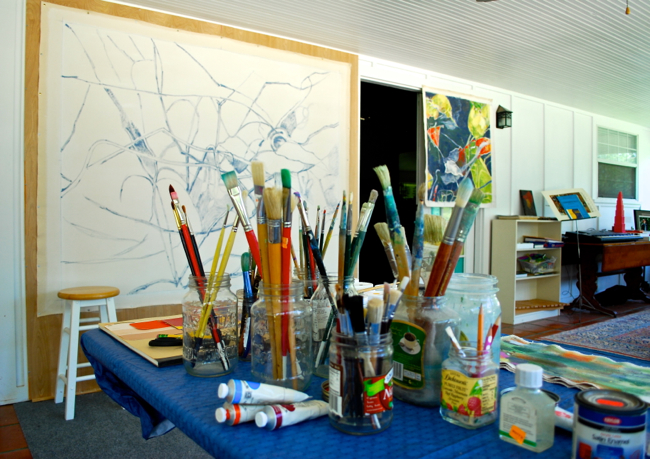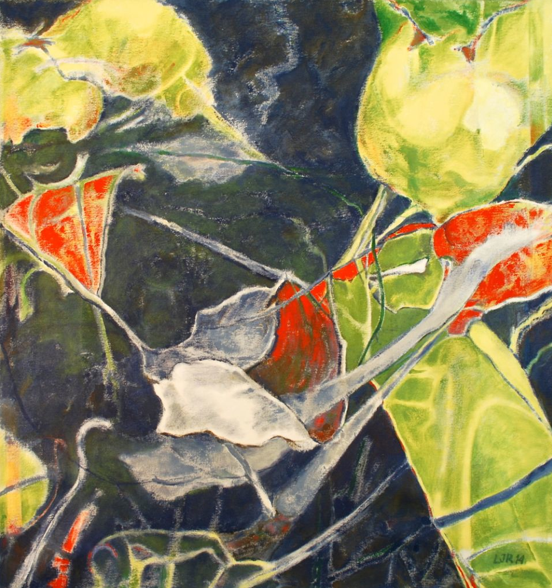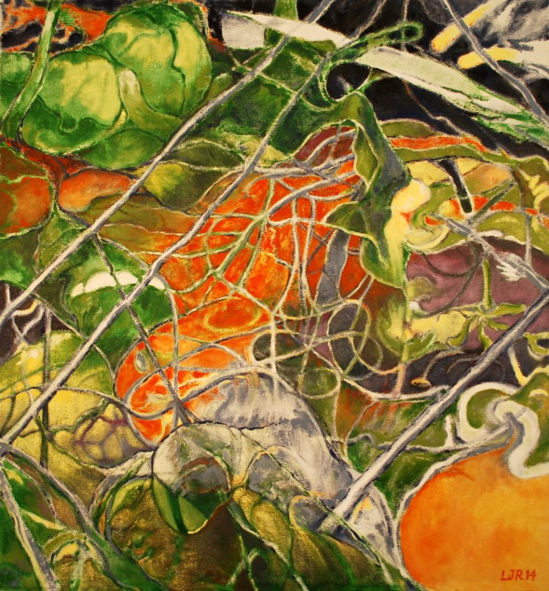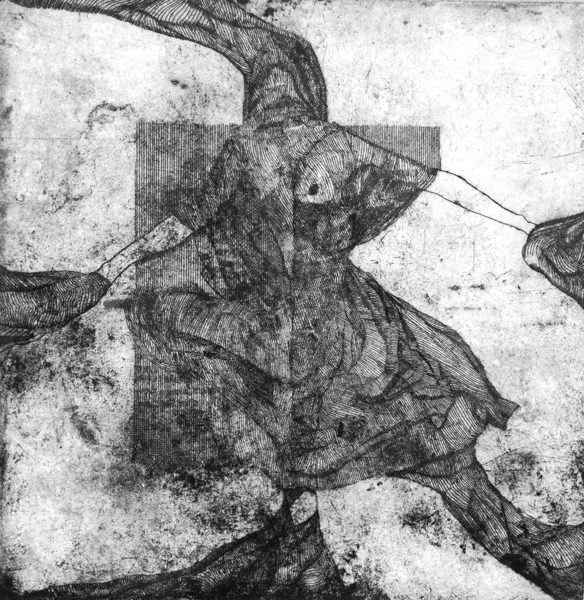I have spent a long time, perhaps too much (due to life circumstances), painting the “Uninhabited garden” series. During my recent time in Texas, mind and painting have asked me for something different, even if it may not be much. At this point in my life, my inspiration has what it has and gives what it gives. Don’t expect many unnecessary complexities at this point.
I liked what I was doing, but after a decade it was time to grow, pictorially speaking, to blaze another trail in search of who knows what …. And as the prairie vegetation and small invertebrates of the Texas countryside raided my imagination, some ideas began a pushing growth. From this reunion with nature sprang images of metamorphosis, the Instars that make up each stage between two periods of molting, development and growth.
Art is also invertebrate, or so it seems to me. It’s a skeleton of imagination beneath successive phases of appearance: Moments of post-embryonic growth of an idea. Each moment is a stage, something similar to the skeletal notion yet not identical to it, and with time and “molting” never will become it. Everything will find a place, as the world of representation is large. Although a common resemblance remains, in each stage a new image and an equivalent counterpart unfolds.
A movement, a half-step forward, with the blank canvas as point A and the finished picture as point B. The “Instar” would be the stage between two points, the transition from idea to realization. The result: a reflection of metamorphosis, of an artistic purpose and the changes during each stage of development. All of this travel within a single work and in an ordered series, but the order is nothing more than a number, a title, a form of identification.
“Instar” is also a portrait, an image (or imago) that defines the phase between two periods of molting in invertebrates. The analogy, the similarity, the resemblance between stages. Strange, this insistence on a natural analogy when any resemblance to reality is purely coincidental. In terms of abstraction, it would be better to call it a simulacrum. That may not be the best description, but at least it sounds good. In short, with the title of “Instar” I recall my own pictorial period of transition, moving to a more chitinous imaginative skeleton, perhaps more settled in the hardness of its conviction.
This is what I’m doing today in painting: a step forward, or so I see it, towards an unknown stage, the development of potential images and forms. Though the paths of those “uninhabited gardens” are not yet exhausted, “Instar” is what concerns me and holds my interest here and now.
Luisma, Maypearl (TX) June 1, 2014



